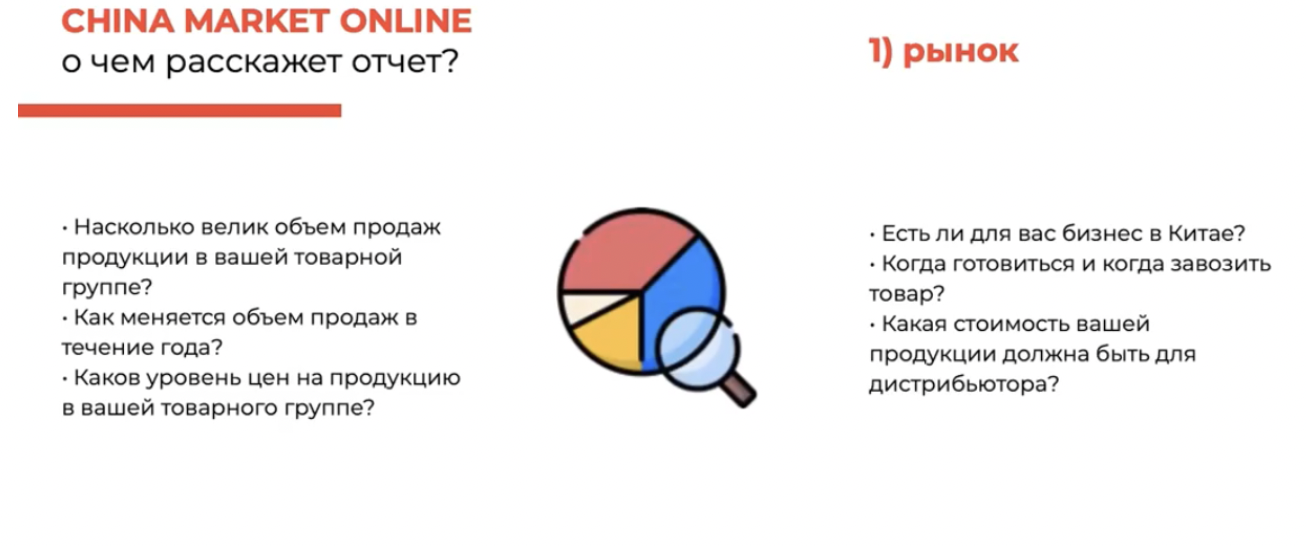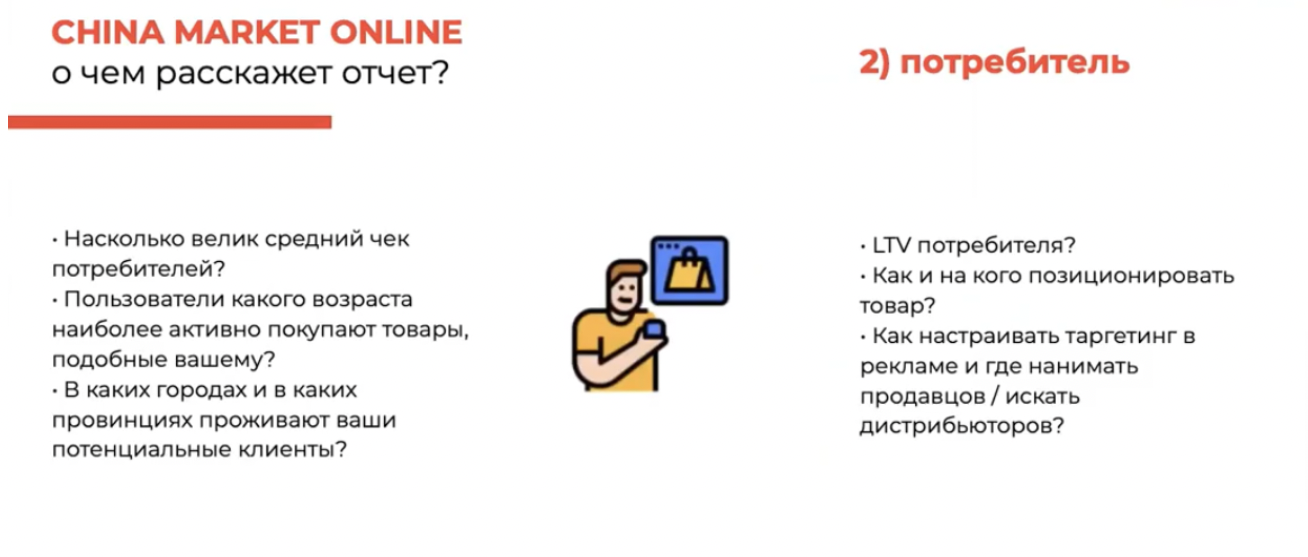The most important element in marketing in China that you most often overlook
08.05.2022
A very positive shift that we have seen in our work and in working with exporters who come to us for advice, help or some kind of services is understanding. Understanding the market is something that finally comes to most of those who have previously encountered China only at exhibitions. Or I thought that China is one and a half billion people, and one and a half containers of its products will always be bought in China.
We, as an export company (and we poison products from Russia under our own brand, initially went the most difficult way), began to look very carefully and in great detail at the sources of information, data sources, sources of business processes – at each stage, literally disassembling the cogs to consciously understand that there is a Chinese market. Unfortunately, no one will count anything for us, will not promote and optimize, will not sort out logistics, etc. Of course, all these blocks of work are boring and boring. I would like to find a Chinese partner who will buy products from you at 100% prepayment directly from the warehouse. But this is not an export. Exporting is much more difficult and harder.

We have been honing the tools, the data sources that we receive in China. In general, this is available to us a little more than the average mass of our exporters. Because we have a Chinese legal entity registered on which trading accounts work. And when you have unified trading and advertising accounts, advertising cabinets, you see a lot of internal statistics that only needs to be taken, processed and digitized. Of course, it is much more interesting to go straight to sales or to find a partner. However, when you enter into a dialogue with this partner, you do not answer the questions that he asks. Dialogue will be unproductive. That’s why market research is so important. You will not be disappointed with your next steps if you initially understand what to do in the market.
Marketing research always looks scary: “now we will go into research for six months.” I can say that we will explore any product, any category, any market segment within one or two weeks. We fully understand it, we disassemble it to the cogs, we build our pricing, analytics and further steps in accordance with it. We have enough data on online sales, this sample is completely representative. Drawing conclusions, building hypotheses, pricing policy, communication strategy based on online analytics, we can say with a high degree of probability that this strategy is relevant for offline as well. We use two tools: these are data on the online market and data on the visual part, on packaging. Because the question always arises whether my products will go to China. And this “will go” can be divided into two blocks: whether you like it (i.e. the visual part) and whether it will be attractive for the price. First we answer these questions, and then we move towards ordering, betting, and selling.
We use data from the Tmall platform (Taobao, 1688) — the largest and most popular platform in China. And we get answers to the questions, how large is the volume of sales of products in your trade group, how it changes during the year, what is the price level. These answers help to understand whether there is a business for you in China at all. For this price, this package, this cornfactor. The question you should answer first of all is how much it will cost in the port of China. And then there are rakes, which we initially stepped on. They are that you do not give in this answer the size of the benefits of the partner to whom you want to sell something. Along with the question, is there a business for you in China, you should always answer the question, is there a business for you in China. Trading channels should also earn money.
In our own research work, there is a focus on food. However, everything is sold on Tmall and Taobao. Therefore, online analytics can be used in any category, up to real estate and aircraft.

First, we answer questions about the consumer: how big is the average receipt, how often does he buy, from which provinces are potential customers, what is their gender / age. For example, for cucumbers, we found out that men buy them more often, although the overall picture of consumption in China, including online, is more female. All these nuances need to be known before you make any design, any purchase offer to any target audience. Because China is a lot of provinces with completely different patterns of consumption. These are thousands of niches.
Then we analyze the competitors. What we know about, but do not suspect how many of them there are. How rigidly they need to be taken into account in the price game. This parameter needs to be monitored constantly. Because once you fix the price and go home from the store, you realize that in two days the price may change. Someone has released promotional kits, someone has launched new SKUs or free shipping. And the consumer online chooses, including by listing, when he receives 10-20 offers at the request of “cucumbers” and chooses from them already from the point of view of external attractiveness, pricing, etc. The price is constantly floating. Therefore, online monitoring, keeping your finger on the pulse at a price is one of the key factors. The consumer looks at the bottom bar. And who puts it on? The very Chinese distributors to whom you gave the goods to “try”, to probe the market, to sell, and do not really care about what happens next with it. And when your product does not go, the Chinese distributor reduces the price. It turns out that by the first spot delivery, without tracking the price, you are already spoiling history for yourself. You will be evaluated according to the lowest price that has ever appeared in China. Accordingly, the distributor will unwind his margin from this lower price and understand what he will buy for this price. And you will not sell for this price, because then you will also need to pay extra, there is no question of any profit.
A very important block design. You can always see online how your packaging will look against the background of competitors. It is important. Before you draw, adapt, localize something, look at what is happening on the Chinese shelf online. And then you will be able to understand the design brief much more accurately and effectively.

In addition to careful study of the shelf, we have learned to do fairly short, but very capacious in content tests. Online survey is a very effective tool in China. Chinese citizens are not stingy with words, they are happy to comment, leave feedback, answer questions that we ask them in our questionnaires. Use: test your hypotheses on a small sample of 100-300 people. These short intermediate steps before you finally drew something, fixed it, brought it and put it on the shelf, help to reduce the negative that the market will give you in the form of rejection of your design, price or some other actions.
About pricing. When everything is good and everything is right, and trademark registration, and certification, and the import of a test batch, pricing remains a pain and the weakest block in the work of our exporters. No one understands where, how, where, what links and what duties and taxes, what expenses for the delivery of goods need to be laid — no one understands, no one counts. Does not sharpen its pricing for that, for example, and if it is not direct sales, if it is a distributor. And these are two more links, because the distributor has a trading network, to which he also has to show their earnings. That is, each “shoulder” has 35-40% of internal marginality. It turns out that in the case of working with traders, we must have a margin of safety of 80%. It’s only offline. And online? Making your own page on online accounts is like making your own shop a meter or two in a huge, huge shopping center. Someone will pass by, of course, but not a fact. It is necessary to advertise. And how to calculate it, how does it affect the price? These are the points that we also study and understand from our online uploads — we also see the cost of a click, the cost of a transition, the conversion when going to the page, the average conversion in sales. All this is also possible and should be considered before you formulate your price offer to the market. If we take offline, these are articles such as listing, promotional staff, promotional load for the first three quarters. All this must be considered before you decide whether your product is promising for sale in China or not. Unfortunately, this is the most important “stop”, which most often overtakes our exporters when they were driving and finally arrived, and at this moment it turns out that the price here in China is not what everyone wants to see. And at this moment it comes to an understanding that it was necessary to change something in the packaging, in the gramage, in the format still in production in Russia, and not to waste time and money on export.

We realized for ourselves that one of the models that is promising in China, which leads to the expansion of sales channels, leads to the start of a dialogue with B2B, is Direct to Consumer. When you come to a Chinese partner and say that you have a new product, he immediately looks at Taobao and says that something is wrong. At this point, your trade with your selling price is close to zero. When you go online, when you fix your price online, when you start creating some kind of minimal sales history, the conversation is completely different. It is already coming from the price that you have fixed, it is no longer coming from the position of “buy at least something”. He is already starting from the position of “we sell and we want you to also be a successful part of our business with you.” You already have to show marginality to the Chinese partner. And such a sales story already creates a story of future success. And it will be preserved.
In conclusion, I would like to note that you need to be optimistic when working with exports. Optimism here drives us to look for those solutions that will still allow us to make money on this. Flexibility, decombination and time — stock up on all this, and there will be growth and development. Many companies that started exporting either end their activities or have sunk into oblivion, simply because they wanted to do everything very quickly. Time goes by, it eats up our desire to do everything quickly. You need to understand that exporting to China is slow and for a long time. Don’t be afraid to get involved in this fight. But, having prepared for it, having stuffed your fists in the form of pricing and market analytics, you will act much more effectively at the very beginning.


